I’ll be diving headfirst into the world of the Moog Grandmother today. You’re in for an interesting read if you’re a synth enthusiast or a newbie trying to find your way around. I will expose all there is to know about this amazing musical instrument, exposing its features and everything that makes it unique.
The Moog Grandmother is more than just your average synthesizer, folks. Its distinctive specifications coupled with its unique sound quality push it miles ahead of the norm! From oscillators to its modulation, keyboard, and arpeggio capabilities, down to its pricing – rest assured that I’ve left no stone unturned!
| Specification | Details |
|---|---|
| Type | Semi-Modular Analog Synthesizer |
| Sound Engine | Analog |
| Number of Keys | 32 Full-Size Keys (Velocity sensitive) |
| Polyphony | Monophonic |
| Sound Sources | 2 Oscillators with selectable waveforms (Oscillator 2 supports Sync to Oscillator 1) |
| Linear FM | Yes |
| White Noise Generator | Yes |
| External Input Jack | Yes |
| VCF Filter (Low Pass) | 24dB/Octave Moog Ladder Filter with Resonance (Self-Oscillating) |
| Static Filter (High Pass) | 6dB/Octave |
| Mod Sources | Modulation Oscillator with multiple waveforms, S/H output, Envelope, and Key Tracking |
| Envelope | Four-Stage (ADSR) |
| Arpeggiator / Step Sequencer | 256 Steps; Three Sequence Files |
| Patch Points | 41 x 3.5mm front and rear panels (21 Inputs, 16 Outputs, |
Moog Grandmother: A Quick Overview
The Moog Grandmother is a semi-modular analog synthesizer featuring 32 full-size, velocity-sensitive keys and a monophonic polyphony setup. Designed for both beginners and seasoned synth enthusiasts, it offers an intuitive yet powerful playing experience.
The synth boasts two oscillators with selectable waveforms, including the ability for Oscillator 2 to sync with Oscillator 1, along with a linear FM and white noise generator to diversify sound creation.
Beyond its robust sound engine, the Grandmother includes notable modulators like a modulation oscillator with multiple waveforms and an S/H output. Its four-stage ADSR envelope ensures precise shaping of sound over time.
An arpeggiator/step sequencer is also present, offering up to 256 steps across three sequence files for complex pattern generation. With 41 patch points available on both front and rear panels for extensive connectivity, this synth allows major flexibility in sound designing without requiring deep expertise.
Oscillators
What first caught my attention was the uniquely designed oscillators of the Moog Grandmother. These are fundamental in shaping the sound produced by this fantastic instrument.
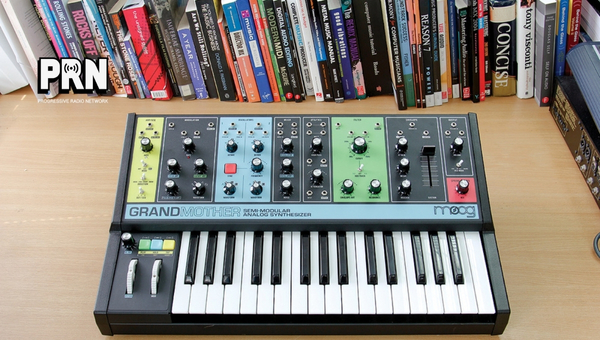
- It has two independent analog oscillators.
- Each oscillator offers selectable triangles, sawteeth, square waveforms, and more.
- Oscillator 1 (OSC 1) provides an adjustable waveshape feature that significantly impacts harmonic content.
The result is a bright, full-bodied tone with substantial depth. This allows me to experiment with sound content in ways I’d never imagined before getting my hands on this extraordinary device.
Moreover, on countless occasions, I have come to appreciate how these oscillators contribute towards creating diverse audio outputs ranging from simple tones to complex audio signals. Therefore, fostering unparalleled creativity and synchrony in music production.
Modulation
Another captivating element of this machine lies within its modulation structure. If you’ve been around synthesizers like I have, you’ll agree with me that they can create some rich soundscape.
The power of modulation comes majorly from:
- Rich LFO, having triangle/square waves including rate knob
- Four flexible destinations through its »patch bay«
This creative “calling” has made my musical journey more exciting than ever! Pairing up different LFOs with various frequencies gives birth to unique sounds as always desired.
Notably intriguing is how engaging these modulations can lead to discovering new ways of expression within music itself – a real game-changer if you ask me!
Keyboard and Arpeggio
The Moog Grandmother comes with a classic 32-note keyboard that is velocity-sensitive with an aftertouch. This adds yet another layer of expressivity to the synthesizer, making it an instrument that adjusts to the player’s emotional connection to their performance.
Key Features:
- High-resolution Synth Action: provides venues for musical interpretations
- Arpeggio: offering great sequences and creating catchy hooks becomes easier
Being a performer at heart, the arpeggio section is dear to me. It has helped me create mesmerizing sound patterns while holding multiple notes, making my music more vibrant and engaging.
Also Read: Pioneer DJ DM-50D Review: Your Ultimate Studio Upgrade
Sound Quality
As soon as I struck my first note on the Moog Grandmother, it felt like being transported into a sound studio packed with expensive vintage gear. The robustness and richness of her voice cannot be overstated. It’s an unmistakable vintage Moog sound, warm yet incredibly crisp.
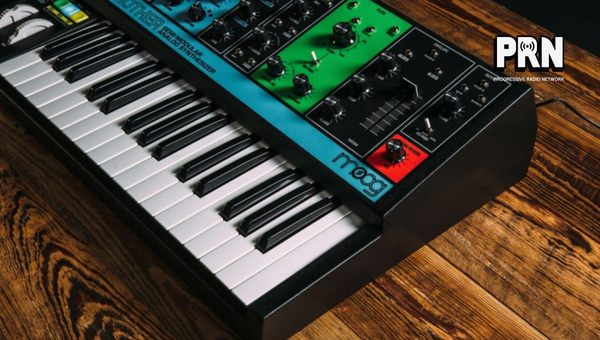
The clarity cuts through any mix without ever feeling overbearing or strident—a testament to exceptional craftsmanship from the auditory cortex to the output jack. As a semi-modular analog synth featuring components based on classic designs by Bob Moong himself—the heart-tugging frequencies that emanate from each oscillation are nothing short of magic.
The filters are creamy smooth and can range from subtly sweet up to skull-crushing resonance as dictated by your preference for tonal flavoring. An unmatched treat for those with an ear for detail in vibrancy when sculpting melodies.
Performance Interface
Right outta the box – no assembly required – plug-in power; there I sat grinning at her bright colorful interface which is hard not to find inspiring due to its sheer aesthetic charm alone. She generously offers 41 patch points making experimentation a delightful exercise.
Each feature has been thoughtfully placed which ultimately simplifies your workflow— no futzing around needed—and helps you hit that creative sweet spot faster than other models in the same price range.
The fader-based architecture allows for seamless hands-on tactile control aiding precision during performance or recordings alike while giving a much-needed confidence boost too—we all know how our nerves can get the better of us during live sessions. So yeah, Moog’s Grandmother was indeed a confidence investment.
It’s a pleasingly intuitive unit – anyone from beginners to seasoned synth pros would feel right at home tweaking and twiddling the knobs, patching cables, or playing beautiful melodies on her inviting keyboard.
Overall, The Moog Grandmother’s interface is a clear winner. It manages to deliver an enjoyable and immersive play experience that aligns itself perfectly with the outstanding sound quality this instrument offers.
Also Read: M-Audio AIR 192×4 Review: Unveiling Superior Sound Quality
Pros and Cons
| Pros | Cons |
|---|---|
| Rich analog sound | Monophonic only |
| High-quality build | May be complex for beginners |
| Versatile modulation options | High price point |
| Connectivity with other modular gear | Semi-modular; not fully modular |
Conclusion
After my comprehensive Moog Grandmother review, I confidently say it is a remarkable synthesizer. From its build quality to its sounds and features — everything about it screams perfection. It provides an endless playground of possibilities for musicians of all levels.
What makes it an absolute gem is how intuitive and user-friendly it is while delivering high-end professional sounds. The true analog system in Moog Grandmother offers real value for money and opens up a world of sound exploration right at your fingertips.
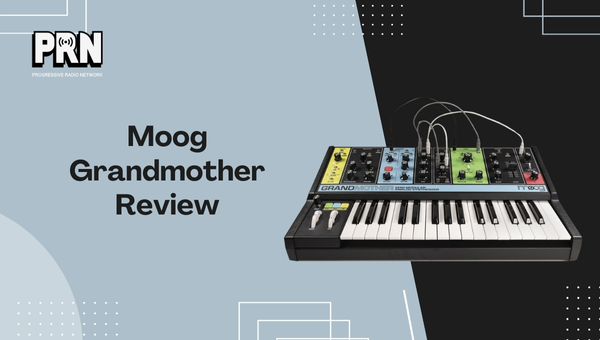
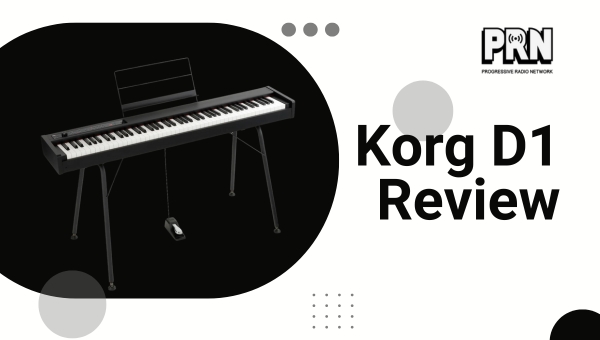
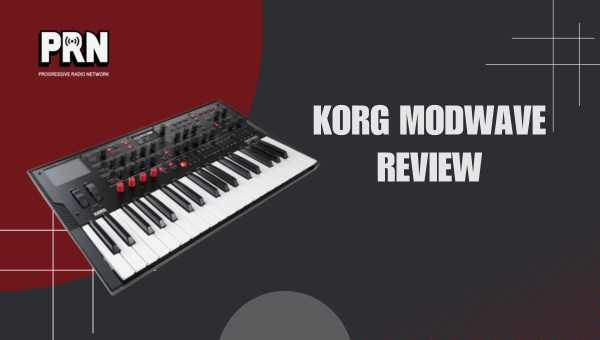

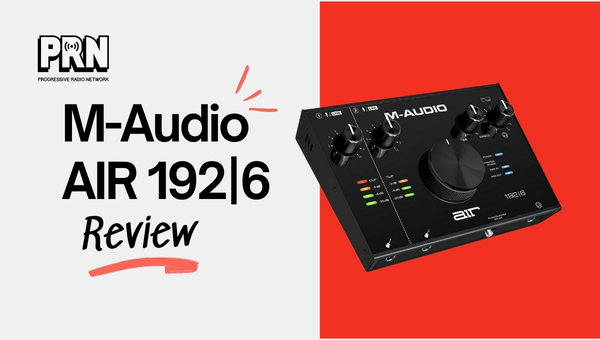
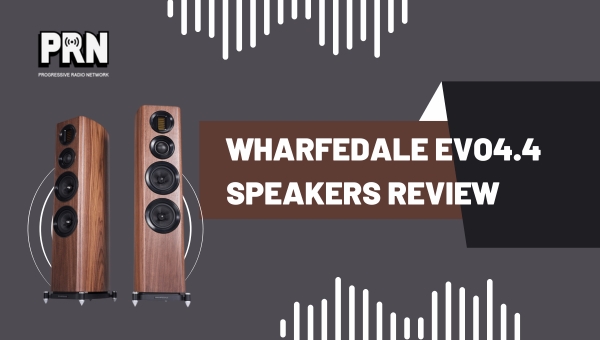
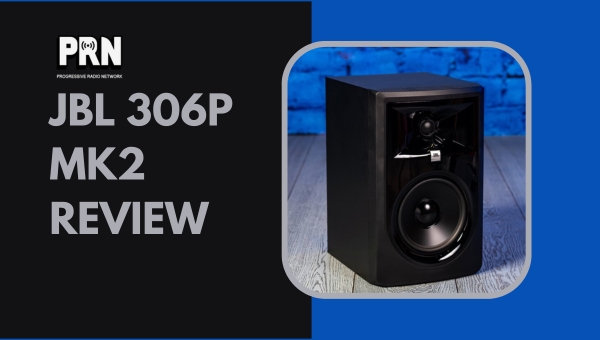
Leave a Comment